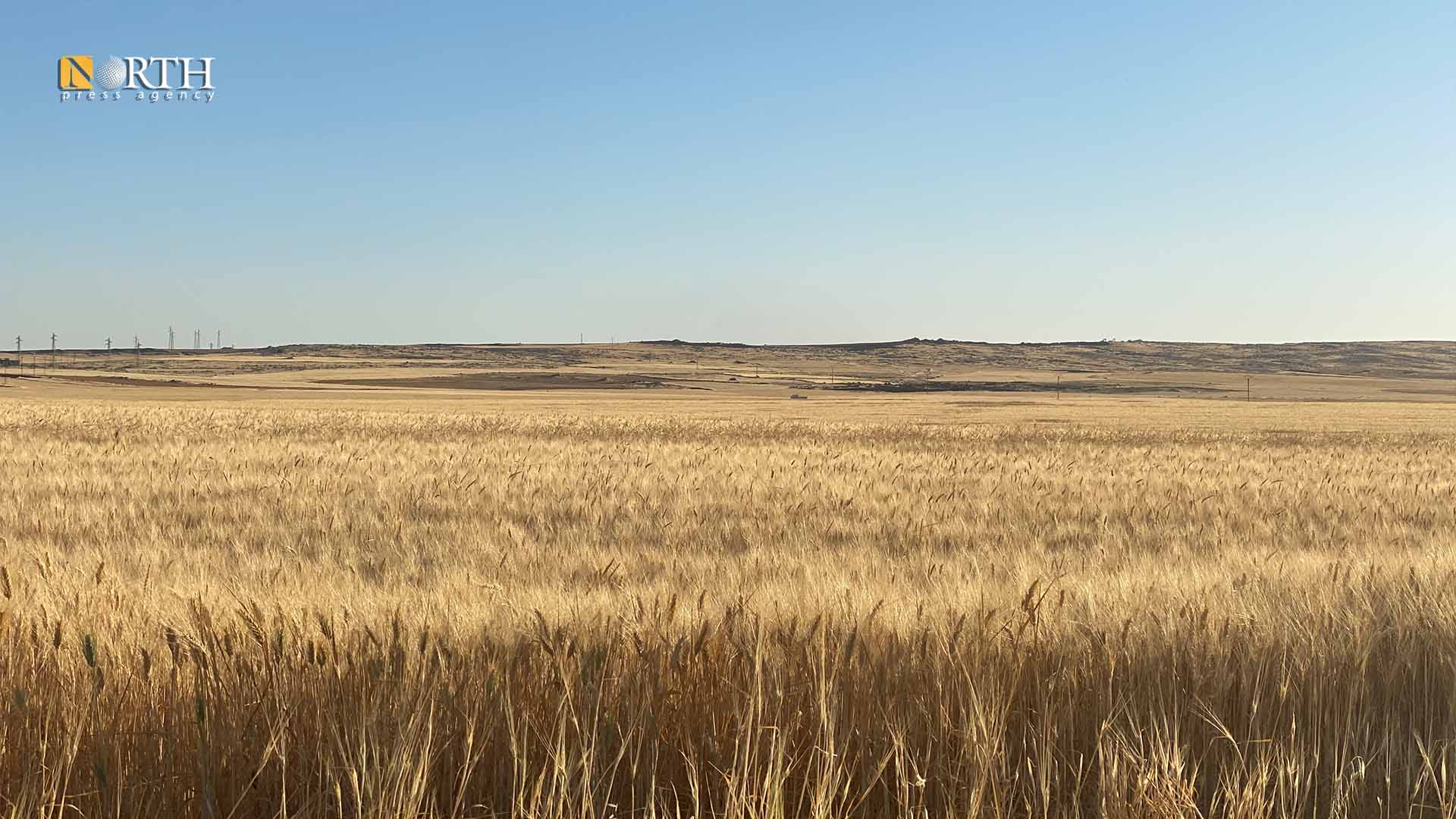Wheat price does not cover cultivation costs: farmers in Syria’s Derik
DERIK, Syria (North Press) – Abdulrahim Muhammad, a farmer from the countryside of Derik, in far northeast Syria, is not sure whether his wheat crop will cover the costs of cultivation or not in light of the wheat price set by the Autonomous Administration in North and East Syria (AANES).
Muhammad cultivated three hectares of wheat, and he does not know whether the crop will secure him enough seeds for the next season in light of the lack of rainfall during the past winter.
The land needs plowing, fertilizer, and pesticide. “I spent 25,000 Syrian pound (SYP) to spray fertilizers for one time, 100,000 SYP for pesticides and 80,000 for bags of fertilizers. How will the production cover these costs?,” Muhammad said.
After he finishes harvesting, Muhammad will not sell the production, but keep it, “because I need seeds to be able to cultivate next year.”
Hussein Khalil, a farmer form the countryside of Derik, believes that wheat price determined by the AANES is too low, and will not cover the costs of cultivation. “Even if it was 2,000 SYP, it will not be enough,” he says.
Khalil planted two hectares of wheat this year and hopes they will cover the costs of cultivation, especially as the production will not be plentiful to sell.
Sheikhmous Suleiman, a farmer from the village of Jam Sharaf, said that he cultivated eight hectares of wheat this year, and “one hectare should produce more than 20 bags (one bag is 110 kilogram), to cover the costs of cultivation.”
Suleiman pointed out that the wheat price is “acceptable, but will only cover a small part of the cultivation costs.”

